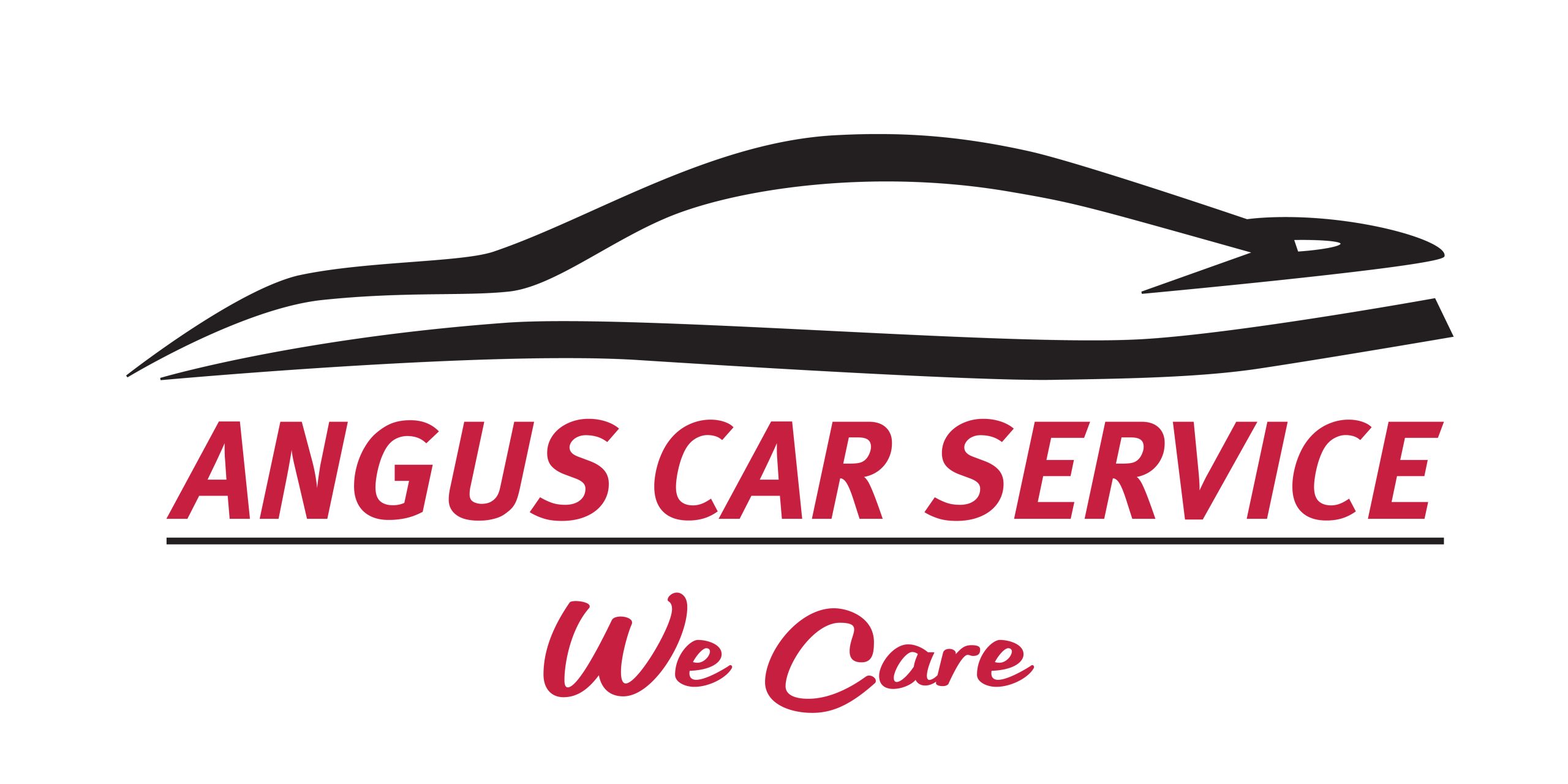
by Aaron Hills | Oct 28, 2016 | News
Regular servicing prolongs the life of mechanical components, helps to maintain roadworthiness and contributes to greater reliability, economy and resale value. Without regular servicing you increase the potential of breakdowns and expensive repairs. Refer to your owner’s manual for maintenance information specific to your car. You should service your new car as often as is outlined in your owner’s manual.
For older cars, you need to have at least an oil and filter change every six months or 10,000km, whichever comes first. All cars have different service requirements but a service should at least contain: an engine oil change, an engine oil filter replacement, and a safety check.
A safety check would include operation of lights, condition of tyres, exhaust and operation of brakes and steering. It’s a good idea to wash your car often, polish it at least twice a year and vacuum it as required.
Regular servicing will extend the life of your engine, save you money in the long run and most importantly makes sure your car is safe.
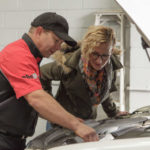
Service
Why Choose us?
Servicing your car can be a minefield! How do I get my car to the mechanics, how do I know I can trust them, will they do a good job, will they use quality parts, will I void my warranty?
At Angus Car Service we make having your car serviced pain free, by offering a free pickup and delivery service. Our technicians have a wealth of experience and we are an award winning family business. We treat all clients fairly, equally and with respect. We are female friendly and provide family friendly waiting rooms and restroom facilities.
We can service your car without voiding your warranty The ACCC says “your preferred mechanic can service your new car without voiding your warranty as long as the vehicle is taken back to the dealer for repair of any warranty items and the service is performed by qualified staff and is done using genuine or appropriate quality parts”
At Angus Car Service we only use quality parts such as Castrol Oil, Ryco Filters and Bendix brake pads
Our family’s commitment to your family:
We look after your vehicle as if it is our own
We listen to what you need
We report on what we see
We only do work that you approve
We explain what needs to be done and why
We can show you the completed work and old replaced parts
If you would like a quote or more information don’t hesitate to give us a call on 47323 676

by Aaron Hills | Sep 21, 2016 | News
Well maintained tyres are paramount to your safety and are a legal requirement. Every time your car is serviced we will inspect your tyres including the spare as part of the safety check. The first thing we check is the tread depth, the minimum tread depth in NSW is 1.5mm. A tyre with less than 1.5mm will result in greater stopping distances, reduced grip and more chance of aquaplaning or sliding in wet weather. Remember only a small amount of rubber touches the road at any one time.
A visual inspection will be done of the sidewalls to check for bulges, bubbles, cuts or other damage to ensure that you are safe from tyre failure or blowouts. The tyres will be inflated to the correct manufactures specified level. To find the correct tyre pressures for your vehicle check the owner’s manual. Some information may also be marked on the vehicle, for eg: inside the driver’s door or fuel flap.
Checking for uneven wear and under inflation on a monthly basis (or weekly if driving long distances) can save you money on fuel and help to preserve your tyres for longer. Under inflation of tyres can also affect the vehicles handling and braking. Excessive wear on the outside of your tyre tread indicates under inflation. Excessive wear on the middle of your tyre tread indicates over inflation.
If uneven wear is noticed it could also be from misaligned steering which can be corrected by performing a wheel alignment. Other indicators that you may need your wheels aligned are road vibration, which not only causes premature wear but can also harm your suspension. A wheel alignment every 12 months or 20,000km is a good form of preventative maintenance.
Regularly servicing and checking your vehicle especially the tyres can not only keep you safe on the roads but can save you money.
For any questions call us on 47323 676, message us on Facebook Angus Car Service or email us from our website.
Happy motoring!

Tyres – Angus Car Service
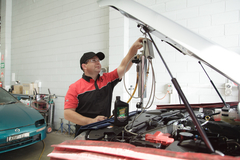
by Aaron Hills | Aug 26, 2016 | News
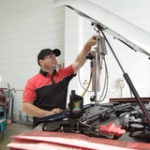
Diesel Induction Service
The development of modern diesel engines provides motorists an engine that is more comparable to petrol engines with extended service life, lower emissions and greater on-demand performance. It isn’t surprising that we are seeing more diesel cars in Aussie workshops. Consequentially we are now seeing new performance issues, notably contamination of the air intake system. The common symptoms include loss of power, running rough, bad fuel economy and smoking exhausts. These issues can be resolved by performing a diesel induction service.
So where does the contamination come from? A couple of common causes are the EGR valve and crank ventilation system. The EGR valve recycles hot exhaust gas into the intake manifold, where it mixes with the engine crankcase vapours and hot intake air. This starts the carbon build up cycle.
When you add to this the less than ideal operating conditions, such as frequent short start – stop driving conditions, the contamination process is accelerated. By the time the driver has noticed the symptoms, the intake manifold has already become restricted, the butterfly’s are usually starting to stick and the EGR coolers are starting to block up.
There are a variety of chemical products designed to rectify these problems, but most are unsuccessful at making a significant impact. We have been waiting and have finally found the ideal solution. BG Products from the USA have developed an intake cleaning system specifically for diesel engines which can be carried out with routine maintenance. Through regular maintenance the carbon doesn’t have a chance to restrict the intake and cause the previously mentioned problems.
The BG diesel induction system cleaner will liquefy & remove the most stubborn oil deposits & unburned fuel contaminants formed by the EGR & PCV gasses as they pass through the air intake and intake valves. This contamination is simply burnt off during the normal combustion process leaving the engine functioning as it was meant to, at its peak efficiency.
To book your diesel induction service call us on 47323676
To see the induction servicing click on this link https://youtu.be/6KQEklLG_D0

Diesel Induction Service EGR valve before & after

by Aaron Hills | Aug 17, 2016 | News
Pink slip – What you need to know

Pink slip
Angus Car Service Kirsten Flavell © 2016
There has been a rise in the number of vehicles being detected as unregistered and motorists are confused about the registration process and their rights. Although universally know as a Pink slip it is officially called an E-safety check and is required on vehicles 5 years or older. To confirm whether your vehicle requires a safety check look at your rego papers, it will state under the billing number whether an inspection is required.
Areas checked include tyre quality and tread depth, working electrics such as headlights, blinkers, interior lights and dash lights, vehicle body condition. Along with engine/suspension/driveline assembly integrity, seatbelt condition, engine driveline oil leaks and operation plus a brake efficiency test.
You can now have your Pink slip inspection done up to 6 months in advance, you don’t have to wait until your registration has nearly expired.
The registration check is actually the cheapest part of your rego, being $39 for cars and $24 for bikes (this changes on the 1st of July). You are better off having your inspection done early as it will give you time to rectify any problems that may arise during your inspection. If an initial inspection identifies repairs required you will be issued with a white slip and have 14 days to have the repairs undertaken. The repaired car will then be checked at no additional charge at the same venue and a Pink slip issued.
If your car is unregistered during the registration process, you are allowed to drive the most direct route between your home and the garage where the repairs are being undertaken or the inspection centre.
You have until 4pm on the day your rego is due to renew it. You no longer need to attend the RMS to renew your rego it can be done online, just follow the instructions on your rego papers
If you have any questions, don’t hesitate to call us on 47323 676, Angus Car Service is an Authorised Inspection Station, please ring and book your car in 1 day before you need your inspection done.
TIP: It’s always a good idea to use the online greenslip calculator before you renew your greenslip, we save money every year by checking if there’s a better deal.

by Aaron Hills | Jul 11, 2013 | News
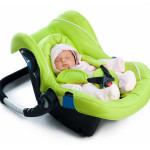
Baby Seats, Safety Restraints
Baby Seats – Safety Restraints
Often called baby seats or child car seats, safety restraints are required by law for children from birth to 7 years old. For them to be effective they must be installed correctly.
The law states that
- Children younger than 6 months must be secured in a rearward facing safety restraint.
- Children aged between 6 months and 4 years must be secured in either a rear or forward facing safety restraint.
- Children aged between 4 and 7 years must be secured in a forward facing child safety restraint or booster seat.
- Children aged between 4 and 7 years cannot travel in the front seat of a vehicle unless all other back seats are occupied by children younger than 7 years in child safety restraints or booster seats.
Research shows that children properly secured in an approved safety restraint that has been correctly installed are significantly less likely to be injured or killed in a car crash. It also shows that 2 out of 3 children are not correctly restrained in some way, which may result in reduced crash protection. Children up to 7 years of age are at least 4 times more likely to sustain a head injury in a crash when using only a seat belt as compared with children in an appropriate child restraint.
Why should I use an Authorised Restraint fitting station?
The law does not state that you have to have your child’s restraint fitted by an Authorised fitting station, however you cannot put a price on the peace of mind you will gain, knowing that your child is protected with a correctly installed child restraint.
Fines and demerit points apply to drivers who fail to ensure all children are appropriately restrained in a vehicle.
All restraint fitters at Authorised Restraint fitting stations have undergone specialised training and are certified by the RTA. They can provide the following services:
- Correctly fit and install a child restraint
- Inspect and adjust your child restraint to ensure it is installed correctly
- Fit a child restraint that requires a vehicle modification
- Install additional anchorage points and other restraint devices
- Fitting of lap and lap sash seatbelts
- Provide you with a certificate stating that your safety restraint has been fitted at an Authorised fitting station
- The restraint fitter can demonstrate correct use so you can be confident in your knowledge in the future
Here at Angus Car Service we are an Authorised Fitting Station and our technician can expertly fit and provide advice about child restraints. Please call and make a booking to have your child restraint fitted on 47323 676.
FAQ’s
What should I look for when buying a child restraint?
Child restraints available in Australia must meet the Australian/New Zealand Standard 1754:2004 for Child restraint systems for use in motor vehicles.
Child restraints from overseas cannot be used as they do not comply with Australian Standards
When can I move my child to the next type of restraint?
Every child is different, so use the following as a guide. Only move your child to the next level of protection when they no longer fit in their current restraint.
From rearward facing restraint to forward facing restraint:
- When your baby is aged between 6 or 12 months (depending on the type of restraint you use) and is able to hold their head up; or
- If your restraint has shoulder marks printed or sewn on the cover, move your baby to a forward facing restraint when his/her shoulders have passed the upper marks
From forward facing restraint to booster seat: your child should be moved when:
- Their shoulders no longer fit comfortably within the restraint; or
- Their eye level is higher than the back of the restraint; or
- The top insertion slots for the shoulder straps are below the level of the child’s shoulders; or
- If your restraint has shoulder marks, move your child to a booster seat when his/her shoulders have passed the upper marks.
From a booster seat to a seatbelt: your child should be moved when:
- Their shoulders no longer fit comfortably within the restraint; or
- Their eye-level is higher than the back of the booster seat; or
- If your restraint has shoulder marks, move your child to a seatbelt when his/her shoulders have passed the upper marks
Can my child sit in the front seat?
- Children younger than four years cannot travel in the front seat of a vehicle with two or more rows of seats
- Children aged between four and seven years cannot travel in the front seat of a vehicle with two or more rows of seats unless all other back seats are occupied by children younger than seven years in a child restraint or booster seat.
- However it is strongly recommended that children always sit in the rear seat as it is safer for children
Note: Front seats do not have child restraint anchorage points supplied, so child restraints and booster seats with tether straps cannot be used in these seating positions, unless yours have had the anchorage points retro-fitted.
If the car has one row of seats (for eg: single cab ute, sports car with a front anchorage point) a child of any age can sit in the front seat provided they are properly restrained. However, most car manufacturers recommend against the use of rearward facing restraints in front passenger seats. A child in a rearward facing restraint should never be placed in the front seat of a vehicle where there is an airbag.
What if I need to travel in a taxi with my child?
In NSW, taxi drivers are required to ensure:
- All passengers younger than 12 months are secured in a child restraint
- All passengers aged over 12 months and under 16 years must:
Occupy a seating position that is fitted with a suitable seatbelt and not share a seatbelt.
- Passengers under 4 years of age must not be in the front seat
- Passengers aged between 4 and 7 years of age may sit in the front seat only if all the rear seats are occupied by passengers under 7 years old.
In NSW one in ten taxi’s carry an approved safety restraint. If you require a child restraint you should ask for one when booking the taxi, or alternatively take one with you.
Some important points to remember
- Using a restraint correctly greatly increases a child’s safety during a crash
- Placing a child in a restraint that is designed for a larger/older child increases the risk of serious injury in a crash
- Ensure the restraint is installed correctly. See a restraint fitter if in any doubt.
- Always use the top tether strap where required
- Teach your child to always keep both arms within the harness system of the child seat or the seat belt of the booster seat
- When using a seat belt with a booster, ensure the seat belt is correctly fitted over the child’s shoulder

